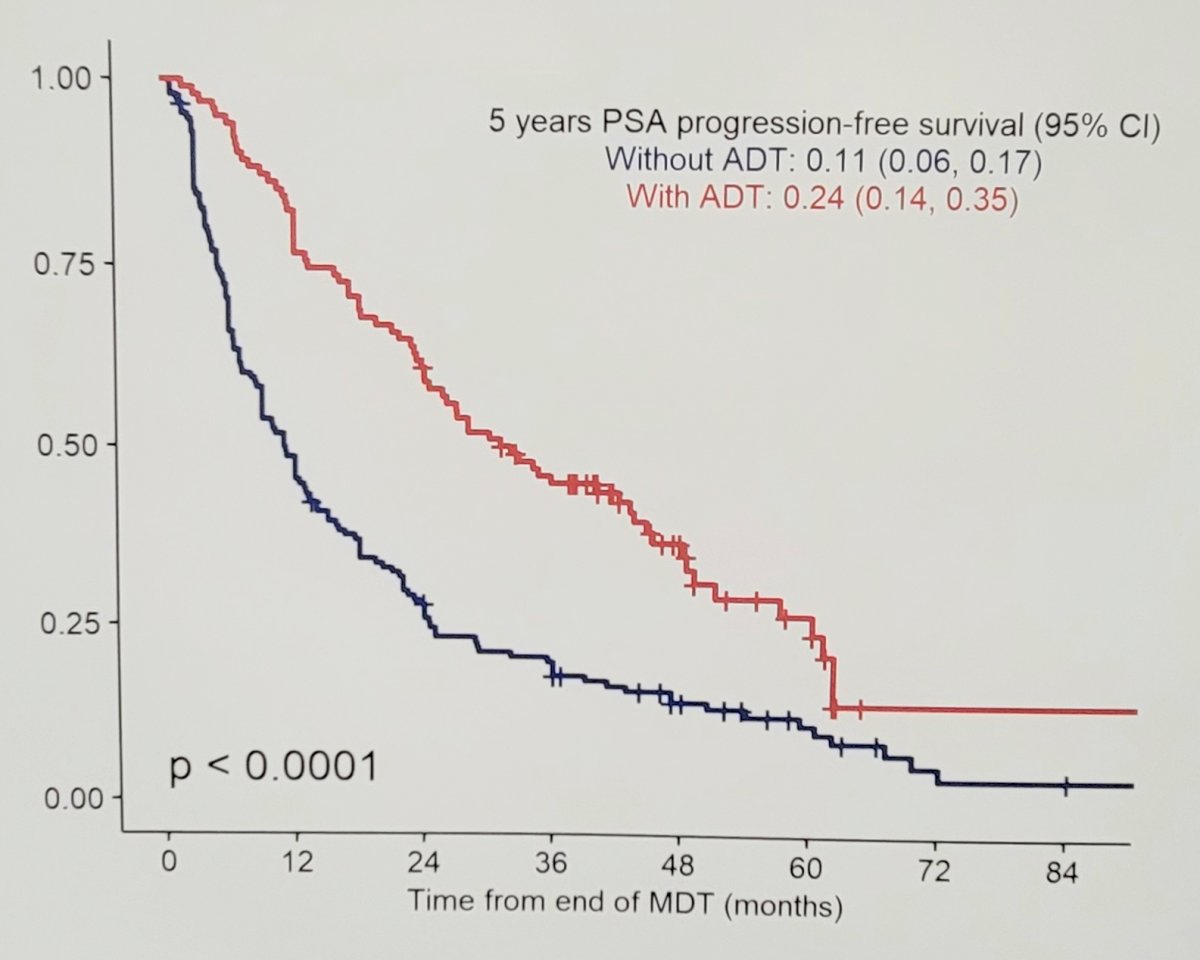(UroToday.com) The 2023 AUA annual meeting included an advanced prostate cancer session, featuring a presentation by Dr. Matthew Deek discussing a multi-institutional analysis of metastasis directed therapy with or without ADT in oligometastatic castration sensitive prostate cancer (CSPC). Several prospective trials in oligometastatic CSPC have shown metastasis-directed therapy can delay time to progression and initiation of ADT compared to observation. However, its use with ADT remains poorly studied. At the 2023 AUA annual meeting, Dr. Deek and colleagues reported a multi-national, multi-institutional retrospective cohort of oligometastatic CSPC treated with metastasis-directed therapy to understand the long-term outcomes of patients treated with metastasis-directed therapy alone or in combination with ADT.
Patients from 13 institutions with oligometastatic CSPC (< 5 lesions) were included. Patients treated with metastasis-directed therapy with or without a defined course of ADT were included. Time to biochemical progression (nadir + 2 ng/dl for patients treated with radiation or increase above 0.2 ng/dl for surgery) was calculated using the Kaplan-Meier method and stratified by treatment group (metastasis-directed therapy alone vs metastasis-directed therapy + ADT). Multivariable Cox regression was performed and adjusted for variables found to be prognostic on univariate analysis.
A total of 263 patients were included (105 with ADT and 158 without ADT) treated between 2003 and 2018 with a median follow-up of 49.5 months with ADT and 54.5 months without ADT. The majority of patients were metachronous (90%) and had bone lesions (60%). The median length of ADT use was 21.3 months (IQR 12.0-31.9), and patients who received ADT versus no ADT had poorer prognostic features including 23% vs. 1% synchronous, and 55% vs 40% Gleason 8-10. ADT use was associated with a better 5-year rate of freedom from biochemical progression (24%, 95% CI, 14% - 35% vs 11%, 95% CI, 6% - 17%; p< 0.0001):

Additionally, ADT use was associated with a better 5-year rate of freedom from distance recurrence (41%, 95% CI, 29% - 53% vs 11%, 29% CI, 21% - 37%; p< 0.00045):
On multivariable analysis, the use of ADT remained significantly associated with time to biochemical progression (HR 0.23, 95% CI 0.16 - 0.33, p < 0.001). Other factors associated with a longer time to biochemical progression were original diagnosis year (HR 1.11, p = 0.004), disease free years (HR 1.09, p = 0.02), and post-metastasis-directed therapy PSA nadir (HR 1.1, p < 0.0001).
Dr. Deek concluded his presentation by discussing a multi-institutional analysis of metastasis directed therapy with or without ADT in oligometastatic castration sensitive prostate cancer with the following take-home messages:
- In this large multi-institutional cohort of patients with oligometastatic prostate cancer treated with metastasis-directed therapy, the addition of concurrent ADT appears to be associated with a greater rate of freedom from biochemical progression, though a small group of patients will have sustained biochemical response with metastasis-directed therapy alone
- Future prospective trials are needed to identify the optimal way to integrate hormonal therapy (testosterone suppression and/or potent antiandrogens) with metastasis-directed therapy
Presented by: Matthew Deek, MD, Robert Wood Johnson – Barnabas Health, New Brunswick, NJ
Written by: Zachary Klaassen, MD, MSc – Urologic Oncologist, Assistant Professor of Urology, Georgia Cancer Center, Augusta University/Medical College of Georgia, @zklaassen_md on Twitter during the 2023 American Urological Association (AUA) Annual Meeting, Chicago, IL, April 27 – May 1, 2023



